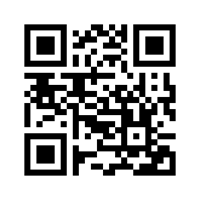
Goddard Space Flight Center, Greenbelt, Maryland 20771
ENGINEERING COLLOQUIUM
Monday, November 18, 2019 / 3:30 PM, Building 3 Auditorium
Tim Livengood
"The Submillimeter Solar Observation Lunar Volatiles Experiment (SSOLVE)"
ABSTRACT -- The Submillimeter Solar Observation Lunar Volatiles Experiment (SSOLVE) is a pathfinder for lunar exploration, a small and targeted instrument to resolve broad uncertainty in the abundance of lunar water and processes for its supply, removal, and relocation, using observations from a landed platform. Lunar water was literally a static subject up until 2009, with the expectation that all water currently on the Moon must be exogenous and fairly ancient and could persist only in permanently shadowed regions (PSRs) near the poles. In one month, September 2009, the Lunar Crater Observation and Sensing Satellite (LCROSS) impact excavated a hole in a south polar crater and demonstrated substantial stored water there, as well as numerous other unexpected volatile species; the Lunar Reconnaissance Orbiter (LRO) took up its circular mapping orbit after guiding the choice of LCROSS impact site based on preliminary observations; and three papers came out simultaneously in the journal Science, demonstrating small but ubiquitous mineral hydrates all over the lunar surface, increasing towards high latitudes and the terminator. Suddenly the field of lunar water was wide open and covered the whole Moon, with the additional feature that several observations suggested diurnal variation that could only be supported with active horizontal transport. The magnitude of observed variability suggested significant quantities of water vapor could be present above the surface and raised challenging questions about the balance between source and sink processes for water at the Moon’ssurface. Water observed in the lunar surface and polar cold traps could be delivered by solar wind or meteoroids or it could be indigenous, with powerful implications for the Moon’s formation history and evolutionary processes. The key to distinguishing the source of lunar water and processes controlling it is the present abundance of water in the atmosphere/exosphere and its diurnal variability. SSOLVE is designed to make these measurements with high sensitivity and precision.
SPEAKER -- Dr. Timothy A. Livengood is an Associate Research Scientist in the University of Maryland’s Department of Astronomy, working in the Planetary Systems Laboratory (Code 693) at Goddard Space Flight Center. He came to Goddard in 1991 as a National Research Council postdoctoral fellow, after completing his PhD in ultraviolet spectroscopy of Jupiter’s aurorae at The Johns Hopkins University using the International Ultraviolet Explorer satellite observatory, which entailed many trips to Goddard. Since then, he has been affiliated with several local institutions while conducting research in planetary atmospheres at Goddard, including three stints with UMD and five years at the Challenger Center for Space Science Education. He is currently in his third and final employment run with UMD. He has worked on projects all over the Solar System with infrared, ultraviolet, and visible spectroscopy and spectrophotometry. He is a co-investigator with the Lunar Exploration Neutron Detector instrument on NASA’s Lunar Reconnaissance Orbiter, to study water on the Moon. and is leading the development at Goddard Space Flight Center of the Submillimeter Solar Observation Lunar Volatiles Experiment (SSOLVE) with the goal of definitively settling critical issues of the abundance of water vapor above the lunar surface. He is a minor player in additional spaceflight instrument projects for submillimeter, ultraviolet, and neutron remote sensing methods.
Colloquium Committee Sponsor: Brent Warner
Engineering Colloquium home page: https://ecolloq.gsfc.nasa.gov